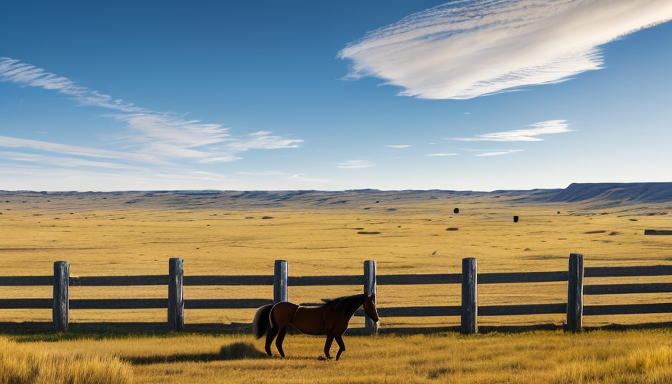Western stories have a unique way of capturing our imagination, whisking us away to a time when the vast, untamed landscapes of the West were filled with adventure and danger. These tales, whether told through the flickering images of a film or the pages of a gripping novel, have shaped American storytelling in profound ways. But what is it about these narratives that pulls us in so deeply?
At their core, Westerns explore the spirit of exploration and the quest for freedom. They invite us to step into the dusty boots of a cowboy, feeling the weight of the world on our shoulders as we ride across the open plains. The characters we encounter—be it the rugged hero or the cunning outlaw—are often larger than life, embodying the struggle between good and evil, law and chaos. It’s this duality that makes us reflect on our own lives and the choices we make.
Moreover, the Western genre has a rich legacy that has influenced countless other genres, from action to romance. Films like “The Good, the Bad and the Ugly” and novels such as “Lonesome Dove” have not only entertained us but also provided a lens through which we can examine our own society. They remind us that the frontier, both physical and metaphorical, is ever-present in our lives, urging us to seek out our own adventures.
In a world that often feels constrained, Western stories offer a thrilling escape, reminding us that the spirit of adventure is alive and well. So, saddle up and embrace the allure of the West—because the journey is just beginning!
The Iconic Heroes and Villains
Western stories are a vibrant tapestry woven with the threads of iconic heroes and villains that have captivated audiences for generations. Think about the rugged cowboy, often depicted with a weathered hat and a steely gaze, riding off into the sunset. These characters aren’t just figments of imagination; they embody the spirit of adventure and the quest for justice that resonates deeply with our desire for freedom. On the flip side, we have the notorious outlaws, those charming yet dangerous figures who challenge the law and society’s norms.
Take, for example, the legendary figures like Wyatt Earp and Billy the Kid. These characters have become synonymous with the Wild West, their stories reflecting the duality of human nature—heroism intertwined with rebellion. The allure of these characters lies in their complexity; they are not merely good or evil but rather shades of gray that make them relatable. The tension between these archetypes fuels the narrative, creating a thrilling backdrop for tales of justice, revenge, and redemption.
Moreover, the Western genre has significantly influenced American storytelling, shaping how we perceive right and wrong. Films like The Good, The Bad and The Ugly and novels such as True Grit have cemented these characters in the cultural zeitgeist. They invite us to explore the Western frontier, a place where the landscape mirrors the internal struggles of its inhabitants. As we delve into these stories, we find ourselves questioning: what truly makes a hero, and what defines a villain?

The Themes of Adventure and Freedom
When we think of Western stories, the themes of adventure and freedom leap to the forefront. These narratives transport us to a time when the vast, untamed landscapes of the West beckoned explorers and dreamers alike. Imagine a lone cowboy riding into the sunset, the wind whipping through his hair, symbolizing the ultimate quest for personal liberation. This imagery resonates deeply with us, as it reflects our own desires to break free from the constraints of everyday life.
In films and books, the Western frontier serves as a backdrop for thrilling escapades and profound self-discovery. The characters we meet—whether they’re intrepid pioneers forging new paths or outlaws challenging the status quo—embody the spirit of adventure. They face perilous challenges, from rugged terrains to fierce rivalries, all while pursuing their dreams. This sense of adventure is not just about physical journeys; it’s also about the internal battles fought within oneself.
The allure of freedom in Western stories is equally compelling. It speaks to our innate yearning for independence, a theme that resonates across generations. As we watch heroes triumph over adversity or villains meet their fate, we are reminded that the pursuit of freedom often necessitates courage and sacrifice. The wild West, with its open skies and endless possibilities, symbolizes a world where one can reinvent themselves, a notion that continues to captivate audiences today.
Ultimately, the themes of adventure and freedom in Western narratives are not just about the past; they are a mirror reflecting our own aspirations for exploration and self-definition in an ever-changing world.
Frequently Asked Questions
- What makes Western stories so appealing?
Western stories tap into our love for adventure and the rugged spirit of the frontier. They often showcase the struggle between good and evil, delivering an exhilarating blend of action, drama, and moral dilemmas that keep us on the edge of our seats.
- Who are the typical characters found in Westerns?
In Westerns, you’ll find iconic characters like the brave cowboy, the cunning outlaw, and the strong-willed saloon owner. These archetypes resonate deeply, as they represent the timeless battle for justice and survival in the untamed West.
- What themes are central to Western narratives?
Adventure and freedom are at the heart of Western tales. They reflect our innate desire to explore uncharted territories and seek personal growth, mirroring the vast landscapes that serve as the backdrop for these thrilling stories.
- How have Western stories influenced popular culture?
Western stories have left an indelible mark on film, literature, and even music. Their themes and characters have inspired countless adaptations and have become a staple in the fabric of American storytelling, symbolizing the spirit of independence and resilience.